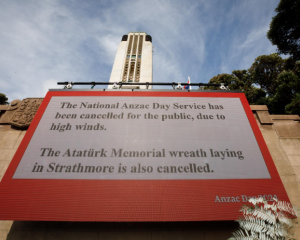Parts of the Pacific Ocean are now the hottest they've been in 17 years, raising concerns about disruptive El Nino weather phenomena hitting New Zealand.
MetService said sea temperatures across the eastern half of the Pacific were now more than 2C above normal.
The conditions were typical of those associated with El Nino formation.
Georgina Griffiths, MetService local meteorologist, said El Nino's impacts on New Zealand would vary from region to region.
Generally, western areas would be wetter, and the eastern seaboard drier than usual, especially around December and January.
"New Zealand starts to feel the El Nino bite in the lead-up to Christmas," Ms Griffiths said.
She told NZME News Service the high sea surface temperatures in the East Pacific happened when easterly trade winds were disrupted or weakened, stopping the "upwelling" and movement of cold water.
Usually an El Nino spring was far colder than usual, with frequent, stormy southwesterlies across the country.
"As we head towards Christmas, those winds typically tilt westerly, drying out eastern parts of both Islands," Griffiths said.
She urged farmers to pay particular attention to El Nino.
Ms Griffiths said New Zealand had already experienced "solid signs" of El Nino this year.
"During June and July, New Zealand experienced more frequent southerly outbreaks than usual - standard El Nino winter fare for us," she said.
"The southerlies have resulted in below average temperatures, overall, for the South Island in June and July and for the North Island since the middle of June."
In contrast with the East Pacific, MetService said the seas around New Zealand were actually colder than usual, especially off the east coast.
What is El Nino?
* El Nino is a climate pattern associated with unusually warm ocean waters in parts of the Pacific Ocean
* An El Nino event can have a significant impact on weather patterns, ocean conditions and fisheries across a large part of the earth
* During El Nino, cyclone conditions in the tropical South Pacific shift eastwards, causing more cyclones than normal in areas like the Cook Islands and French Polynesia
* El Nino can also cause heavy rainfall and flooding over Peru, and droughts over Indonesia and Australia
* In New Zealand, an El Nino event could make western areas wetter, and the eastern seaboard drier than usual
* El Nino means 'The Little Boy' or 'Christ Child' in Spanish. It was first observed in the 1600s by fishermen off the South American coast












